Test Results
The India wheelchair prototype failed the double drum test at 125,000 cycles. The rear crossbrace broke, and it was determined to be a Class III failure. The rear tube of the cross brace broke from the middle at the crossbrace insert.
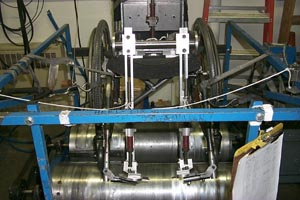
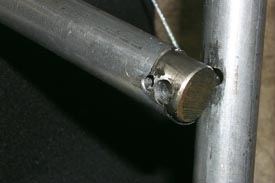
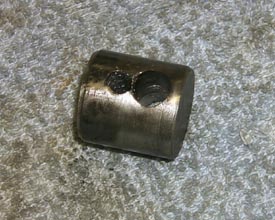
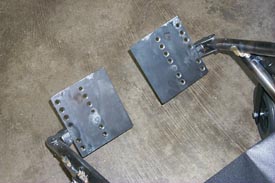
A steel insert is used to reduce the stress concentrations from drilling through the thin walled tubing of the cross brace. This is accomplished by increasing the contact area (reducing stresses) betw
een the pin and the tubing and by distributing the load to intact sections of the tube. The insert also makes the tube much stronger to bear bending torques.
Two holes were drilled in the cross brace insert. The smaller hole was drilled first according to the technical drawings. However, a second, larger hole was needed in order to retrofit design changes. After the drilling operation, only 1/16" of the insert extended into the lower sleeve of the front crossbrace tube, which may weaken the strength of the tubing to sustain bending torque.
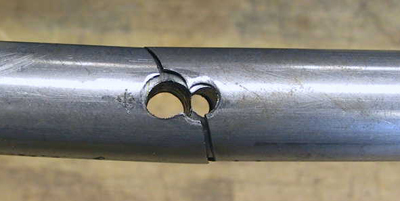
- top dead center of the smaller hole
- at bottom dead center of the larger hole.
The failure mode was initially in torsion as can be seen by the characteristic break in the tubing at a 45 degree angle. It apprears that the break was completed by stresses in bending.
Both load patterns of twisting and bending are present during cyclic testing on the double drum machine.
According to the failure analysis, corrective actions to the crossbrace will be taken. Another tube, the same dimension as the failed one, will be made.
A longer insert (three inches of length) will be made.
After assembling the insert into the tube, one hole will be will drilled through the insert and the tube. The diameter of this hole will be the same as that of the larger hole in photo of the crossbrace insert in the broken tube, above.
All these corrective actions are intended to strengthen the ability of sustaining loads in bending and torsion.
Double drum and curb drop testing will be completed to test the effectiveness of the corrective measures.